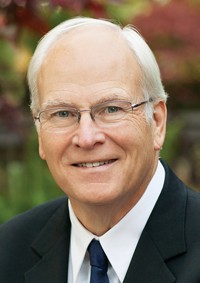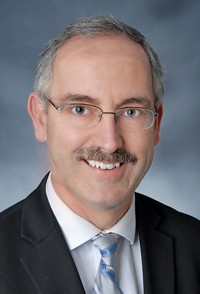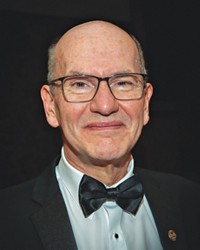Advertisement
Grab your lab coat. Let's get started
Welcome!
Welcome!
Create an account below to get 6 C&EN articles per month, receive newsletters and more - all free.
It seems this is your first time logging in online. Please enter the following information to continue.
As an ACS member you automatically get access to this site. All we need is few more details to create your reading experience.
Not you? Sign in with a different account.
Not you? Sign in with a different account.
ERROR 1
ERROR 1
ERROR 2
ERROR 2
ERROR 2
ERROR 2
ERROR 2
Password and Confirm password must match.
If you have an ACS member number, please enter it here so we can link this account to your membership. (optional)
ERROR 2
ACS values your privacy. By submitting your information, you are gaining access to C&EN and subscribing to our weekly newsletter. We use the information you provide to make your reading experience better, and we will never sell your data to third party members.
Policy
ACS Engages Industry And Industrial Members
by Diane Grob Schmidt, ACS President
July 20, 2015
| A version of this story appeared in
Volume 93, Issue 29
I want to update you on an area I promised to address during my presidency: reaching out to chemical industry leaders to communicate the value of the American Chemical Society to them, their employees, and their operations.
Why is this important for you and for all ACS members?
More ACS members work in industry than in any other sector. This effort is about helping ensure that your employer values your participation in ACS, which provides leadership training, career aids, courses, and more to support you in your career.
If, on the other hand, you are in academia, then this effort will help ensure that your students will become meaningfully employed. ACS advocates for R&D funding and for tax credits that help companies continue to employ chemists.
I am working on a number of fronts to amplify the relevance of ACS to our industrial members. The current approaches follow.
Chemical Sciences Chief Technology Officer (CTO) Summit: To strengthen ties with our industrial colleagues, ACS Executive Director and Chief Executive Officer Tom Connelly and I are organizing a CTO Summit in Washington, D.C., for September. The goal is to facilitate the exchange of views among CTOs on precompetitive subjects. Speakers from pertinent federal government agencies will address issues relevant to the CTOs’ operations and innovation drivers.
Hearing the views of CTOs on current and longer-term challenges and opportunities should greatly assist ACS in developing important services for industry members.
CEO/CTO Engagement: To enhance the society’s relationships at the highest level of industry, Tom and I have kicked off a series of visits with CEOs and CTOs of several large companies such as DuPont, Eli Lilly & Co., and Procter & Gamble.
We want to listen so we can understand firsthand the challenges facing chemistry enterprise CEOs and CTOs—and to explore how ACS can help address those challenges. For ACS to serve industry better, we need a more complete understanding of its needs.
Industry Roundtables: ACS has considerable experience convening industry roundtables—groups that gather for topically focused, ongoing meetings for which member companies set the mission, priorities, membership scope, discussion topics, and metrics.
I am working with ACS staff to establish two new roundtables to debut in 2016. A number of topics—including advanced manufacturing and industry’s response to regulatory requirements to make proprietary information public—are under consideration. We will discuss the new roundtables with the CTOs during the summit.
Finally, if you have any suggestions for additional roundtables, please send me your ideas at president@acs.org.
Advocacy & Outreach: Recognizing the important role the chemistry enterprise plays in driving U.S. innovation, job creation, and economic growth, I have encouraged ACS to partner with other organizations to find common areas of interest in the advocacy arena. One area identified was the modernization of the Toxic Substances Control Act (TSCA), which is undergoing its first major update since its creation in 1976. Guided by its public policy position statement “Chemical Risk Assessment and Regulatory Decision Making,” ACS has collaborated with the American Chemistry Council (ACC) to chart a bipartisan path to updating the rules for use of chemicals.
The House of Representatives passed a TSCA bill on June 23 by a vote of 398 to 1. Action now moves to the Senate bill, which contains ACS-sponsored provisions to create a federal interagency task force to support and coordinate sustainable chemistry R&D across the federal government. Action is expected on the Senate bill before the August recess.
I am also working with Tom to reach out to ACC and other groups to find additional shared areas of interest. ACS can use its considerable convening powers and credibility to bring together diverse stakeholders. We can address issues that would help advance the health of the U.S. chemistry enterprise. Although these discussions are in the formative stage, I am hopeful they will bear fruit.
Corporation Associates: I strongly support the Committee on Corporation Associates (CA) and its chair, Dawn Mason, in implementing CA’s new strategic plan. The plan addresses the needs of industry scientists and the companies that employ them.
CA’s mission is to influence ACS programs, products, and services to meet the needs of chemistry-based enterprises and to provide a business and corporate voice to the ACS Board of Directors and across ACS.
What can CA do? It can identify unmet needs of industry members and companies and communicate findings to governance units throughout the society. CA can also contribute to ACS efforts in public policy and provide strategic funding to programs to aid industry members.
By implementing this ambitious agenda, ACS will become an even more highly valued asset for its industrial members, and the chemistry enterprise, in the years to come.
Views expressed on this page are those of the author and not necessarily those of ACS.






Join the conversation
Contact the reporter
Submit a Letter to the Editor for publication
Engage with us on Twitter